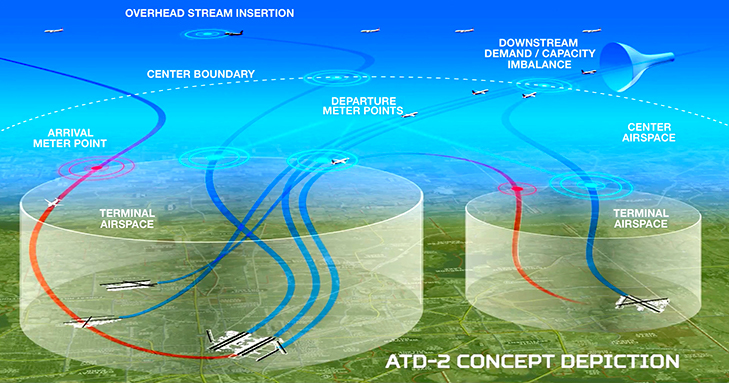 |
|
| The ATD-2 Poject delivered its final research transition package and was concluded on September 30, 2021. This page is being retained for reference and historical purposes, but the content is no longer being updated. |

ATD-2 Industry Workshop Documentation Outline High Level ATD-2 Data DescriptionIntroductionATD-2 requires data from multiple sources to work. This page provides a high level description of the data sources used by ATD-2 along with links to other pages with more details. ATD-2 Data SourcesFAA SWIMThe FAA System Wide Information Management (SWIM) program provides a single point of access for FAA Flight, Aeronautical, and Weather data. ATD-2 utilizes connections to SWIM infrastructure to received flight and flow information. This section provide an introduction to connecting to the FAA System Wide Information Management (SWIM) infrastructure and consuming data. SWIM provides a large portion (not all) of the data used by ATD-2. This page will provide information on connecting to the FAA SWIM network and understanding the data provided. Getting Connected to SWIMThe first step in connecting to SWIM is visiting FAA SWIM connection website: https://www.faa.gov/air_traffic/technology/swim/products/get_connected/. On this page, you will find details on the steps involved in obtaining access to the FAA SWIM network. Once connected, information on the individual services available from SWIM and relevant technical details (schemas, conops, etc.) are stored and maintained on the FAA NAS Service Registry and Repository (NSRR). Many of the information services available from SWIM are made available as data streams using the Java Messaging Service (JMS) messaging protocol. Some information services................................. SWIM Data Used in ATD-2ATD-2 is a data driven project. Without multiple sources of streaming data, the system cannot operate. Much of the data used is from FAA SWIM. Below is the list of FAA SWIM data sources used in the ATD-2 Project along with a brief description. By following the link on each source, you can learn more on how FAA SWIM data, along with other data sources, are used within the ATD-2 infrastructure. Additionally, information such as data dictionaries and mapping of individual data elements into a common database using the Fuser can be found. Time Based Flow Managment (TBFM)This service provides the following data products: TBFM Metering Status, TBFM Interface Status, TRACON Name, Gate Name, Arrival Airport Information, Airport Configuration, MRE Information, Arrival Airport Configuration Information, Airport Acceptance Rate Group, Terminal Radar Approach Control (TRACON) Acceptance Rate Group, Meter Point Acceptance Rate Group, Runway Acceptance Rate Group, Super Stream Class Configuration Group, Satellite Airport Configuration Group, Flight Plan Information, Estimated Times of Arrivals (ETA), Scheduled Times of Arrival (STA), Meter Reference Element (MRE) information, and Scheduling information. Traffic Flow Management Service (TFMS)The data provided includes messages received by other systems which are enhanced by TFMS. The enhanced elements include (but are not limited to) converted route information, entry/exit data for certain TMI’s, other computed date such as Route Availability Planning Tool (RAPT) timeline data, National Traffic Management Log (NTML) restrictions, and more. SWIM Terminal Data Distribution Services (STDDS) Surface Movement Event Service (SMES)The Surface Movement Event Service sends derived surface movement events for all aircraft monitored at select towers associated with a TRACON. In addition, the service sends ASDE-X/ASSC track positions for all aircraft and vehicles collected from towers associated with a TRACON. + Back to Top |